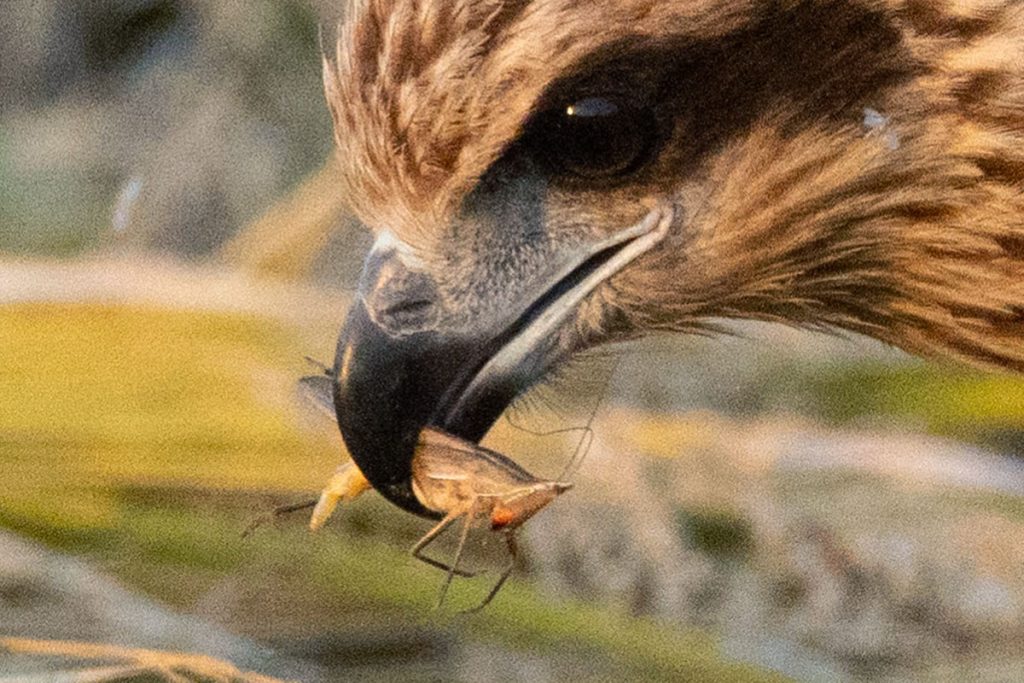このページを 日本語 で読む
It's harvest time. As the combine harvester rumbles through the rice fields, a black kite dives down, slicing through the air with graceful precision. Sado Island in Niigata Prefecture is the only place in Japan where the crested ibis, a special natural monument of Japan, still lives in the wild.
I relocated from Tokyo to Sado to capture this unique bird on film. Though the crested ibis is usually my primary subject, the black kite's commanding presence was impossible to ignore, drawing my lens its way.
Masterful Flight
Heavy September rains delayed the 2024 rice harvest. The downpours caused the rice plants to topple over, making the combine harvest take three times as long as usual.
This was my first autumn joining the combine harvest operation. Though initially a bit challenging, it was enjoyable once I got the hang of it. Then, I witnessed something extraordinary.
Whoosh! As we harvested, a black kite suddenly swooped down right beside me, slicing through the air. Startled by the noise of the combine, grasshoppers, frogs, and mice sprang out of the rice fields, creating a prime hunting ground for the kites. Watching these birds snatch prey mid-air was truly a sight to behold.
Underestimated Hunter
Known as tobi or tonbi in Japan, the black kite is a member of the hawk family. These birds typically grow to 60 cm long, with a wingspan that can reach up to 160 cm. They are a familiar sight across Japan, often identified by their distinctive, whinnying call, "pee-hyo-lo-low."
Omnivorous by nature, the black kite feeds on carrion and scraps. This has earned it nicknames like "cleaner" and "scavenger." Japanese proverbs reflect its reputation, with expressions like: "The black kite will snatch your fried tofu" (meaning something valuable is unexpectedly taken). Another expression applied to it is, "A black kite bears a hawk," meaning an exceptional child born to ordinary parents.
Though often seen as a lesser bird of prey compared to other raptors, the black kite is a capable hunter. One only has to watch it diving with precision, capturing even the smallest insects with its sharp beak or talons.
Coexisting with the Ibis
After the rice is harvested, the fields turn into abundant feeding grounds for birds. Black kites, knowing the combine operators pose no threat, show no fear of the machines. This allows me to observe their hunting skills up close. Among their talents, they skillfully drop any rice stalks they grab along with their insect prey. At one point, an insect must have landed on my hat, and a kite almost snatched it right off my head!
These fields also serve as a food source for the crested ibis, but these shy birds keep their distance from the combines. They only step into the fields after the machine moves, using their beaks and feet to probe the soil for loaches and other delicacies.
This pattern keeps the kites and ibis from competing for food. However, the kites often squabble among themselves over prey, a thrilling sight to watch up close from the combine and one of the true highlights of the job.
Read more Sado Wildlife in Focus photo essays by photojournalist Fumie Oyama.
RELATED:
- [Sado Wildlife in Focus] On the Trail of the Japanese Crested Ibis
- Preserving Satoyama: Ichikai Town Issues Ground-Breaking Ordinance to Protect the Grey-Faced Buzzard
- Save the Butterflies: Japanese NPO Joins European Monitors to Count Colorful Insects and Preserve Biodiversity
(Read the essay in Japanese)
Author: Fumie Oyama, Photojournalist
Fumie Oyama is a two-time winner of the Japan Newspaper Publishers & Editors Association Award as a photographer for The Sankei Shimbun. After covering the reintroduction of the crested ibis to the wild for 11 years, Oyama left the company in 2020 to move to Sado Island. There, he continues to photograph the ibis and other wildlife while engaging in farming. He currently promotes the charms of Sado Island as a photojournalist. Follow Fumie Oyama on Instagram.
このページを 日本語 で読む
